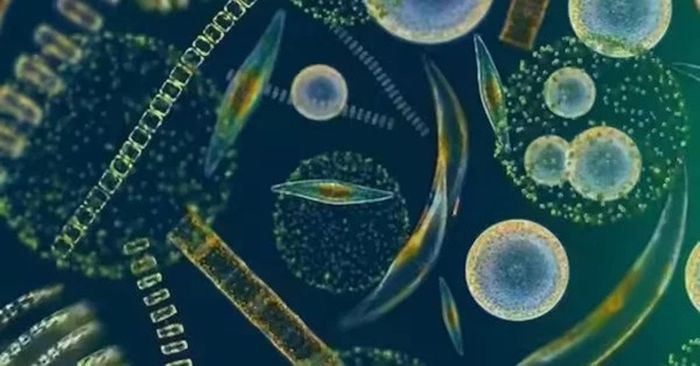Wikimedia Commons
Contents of a dip net taken in 2006 by researchers in the Pacific Ocean. The photographic image contains a wide variety of planktonic organisms, ranging from photosynthetic cyanobacteria and diatoms to various types of zooplankton, from eggs to larvae to adults.
Nationalgeographic.co.id —Using a sample from a survey plankton oceans nearly a century old, researchers at the University of California San Diego School of Medicine suggest that rising levels of man-made chemicals found in parts of the world’s oceans could be used to monitor the impact human activities on the health of ecosystems. This could one day be used to study the relationship between marine pollution and rates of childhood and adult chronic disease on land.
These findings were published in the journal Total Environmental Science January 9, 2023 edition titled “Historical Biological Tracking of Pollution Trends in the North Pacific Using Archived Samples from the Plankton Recorders Continuing Study”.
“This is a pilot study to test the feasibility of using archived plankton samples from the Continuous Plankton Record Survey (CPR) to reconstruct historical ocean pollution trends in the ‘space and time,” said lead author Robert K. Naviaux, a professor in the Department of Medicine, Pediatrics, and Pathology at UC San Diego School of Medicine. “We were motivated to explore this new method with the alarming increase in childhood and adult chronic diseases that have occurred worldwide since the 1980s.”
Recent studies have highlighted the close relationship between ocean pollution and human health. In this study, the researchers asked the question: Does change in plankton exposure (a measure of all lifetime exposure) correlate with the health of ecosystems and fisheries?
“We also wanted to lay the groundwork for a second question: Can man-made chemicals in plankton be used as a barometer to measure changes in the global chemosphere that could contribute to childhood and adult disease? ‘In other words, we wanted to test the hypothesis that the speed and susceptibility to plankton contamination could make them the marine version of canaries in coal mines,’ said Prof. Naviaux.

QS study
Marine plankton exist in all marine ecosystems. They create the complex communities that form the basis of food webs and play an important role in maintaining the health and balance of the oceans. Plankton generally have a short lifespan and are very sensitive to environmental changes.
Based in the UK, the CPR Survey is the oldest and most geographically extensive survey of marine ecology in the world. Since 1931, nearly 300 ships have traveled more than 11.5 million kilometers with sampling devices that capture plankton. Environmental measurements have been carried out in all the oceans of the world, the Mediterranean, the Baltic and the North Sea, as well as in freshwater lakes.
These efforts, along with complementary programs elsewhere, aim to document and monitor the general health of the oceans. This work is based on the well-being of marine plankton – the diverse collection of tiny organisms that provide food for many other aquatic creatures, from molluscs to fish to whales.
“Marine plankton is present in all marine ecosystems,” said study co-author Sonia Batten, former coordinator of CPR Pacific and currently executive secretary of the North Pacific Ocean Science Organization. “They create complex communities that form the basis of food webs. They also play an important role in maintaining the health and balance of the oceans. Plankton are generally short-lived and very sensitive to environmental changes.”
Naviaux, corresponding author Kefeng Li, a project scientist in Naviaux’s lab, and colleagues assessed plankton specimens collected from three different locations in the North Pacific at different times between 2002 and 2020. Then, using various technologies, they assessed their exposure to various chemicals. .man-made products, including pharmaceuticals; persistent organic pollutants (POPs) such as industrial chemicals; pesticide; phthalates and plasticizers (chemicals derived from plastics); as well as personal care products.
Many of these pollutants have declined in abundance over the past two decades, the researchers say, but not universally and often in complex ways. For example, analyzes show that hereditary rates of POPs and the common antibiotic, amoxicillin, have declined significantly in the North Pacific Ocean over the past 20 years. This may be due in part to increased federal regulation and a decrease in overall antibiotic use in the United States and Canada. However, these results are skewed by increased concurrent use in Russia and China.
Read also : Oil pollution in the world’s oceans, 90% of spills are human actions
Read more news and articles on Google News
CONTENT PROMOTE
related videos

“Professional communicator. General music practitioner. Passionate organizer. Evil twitter fan.”






